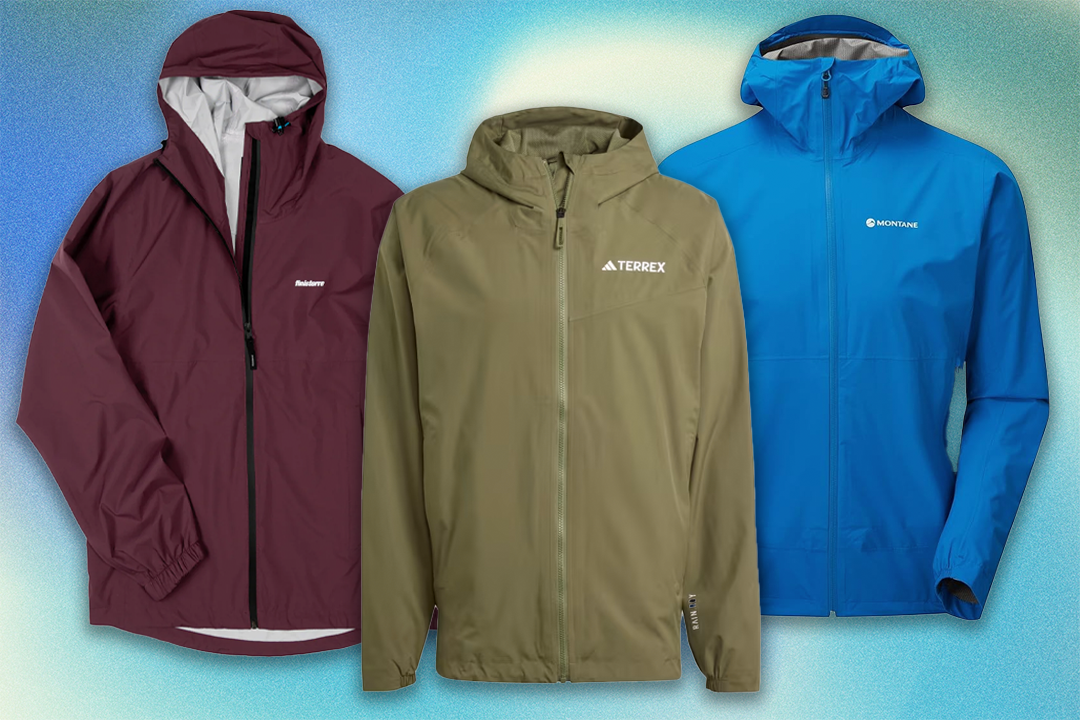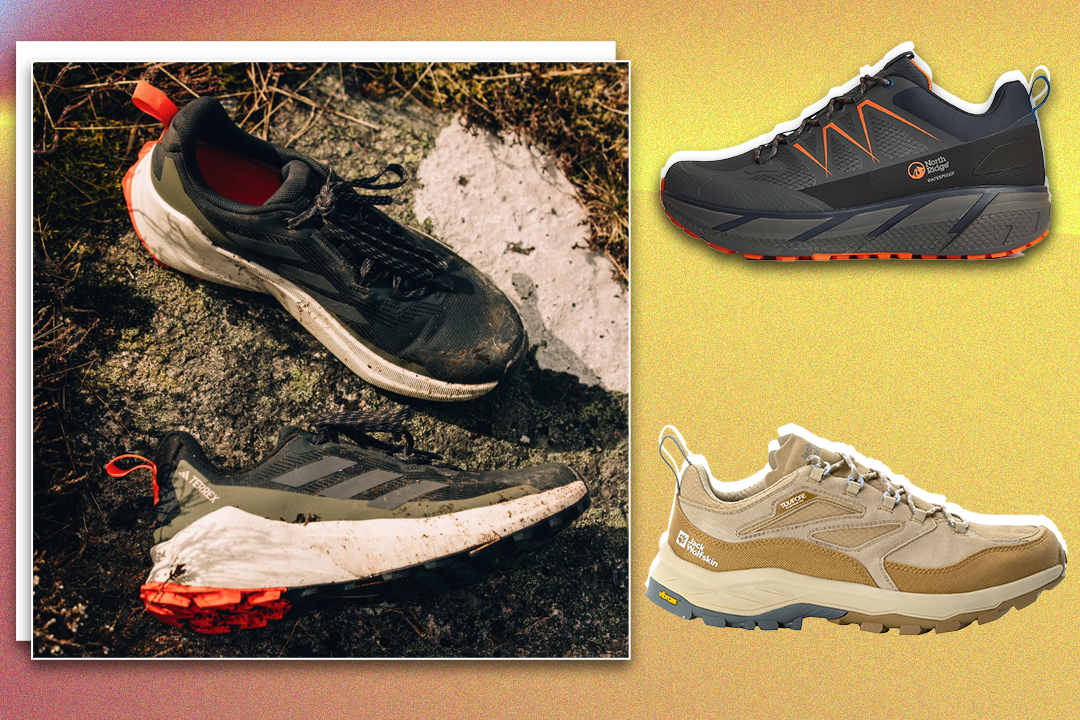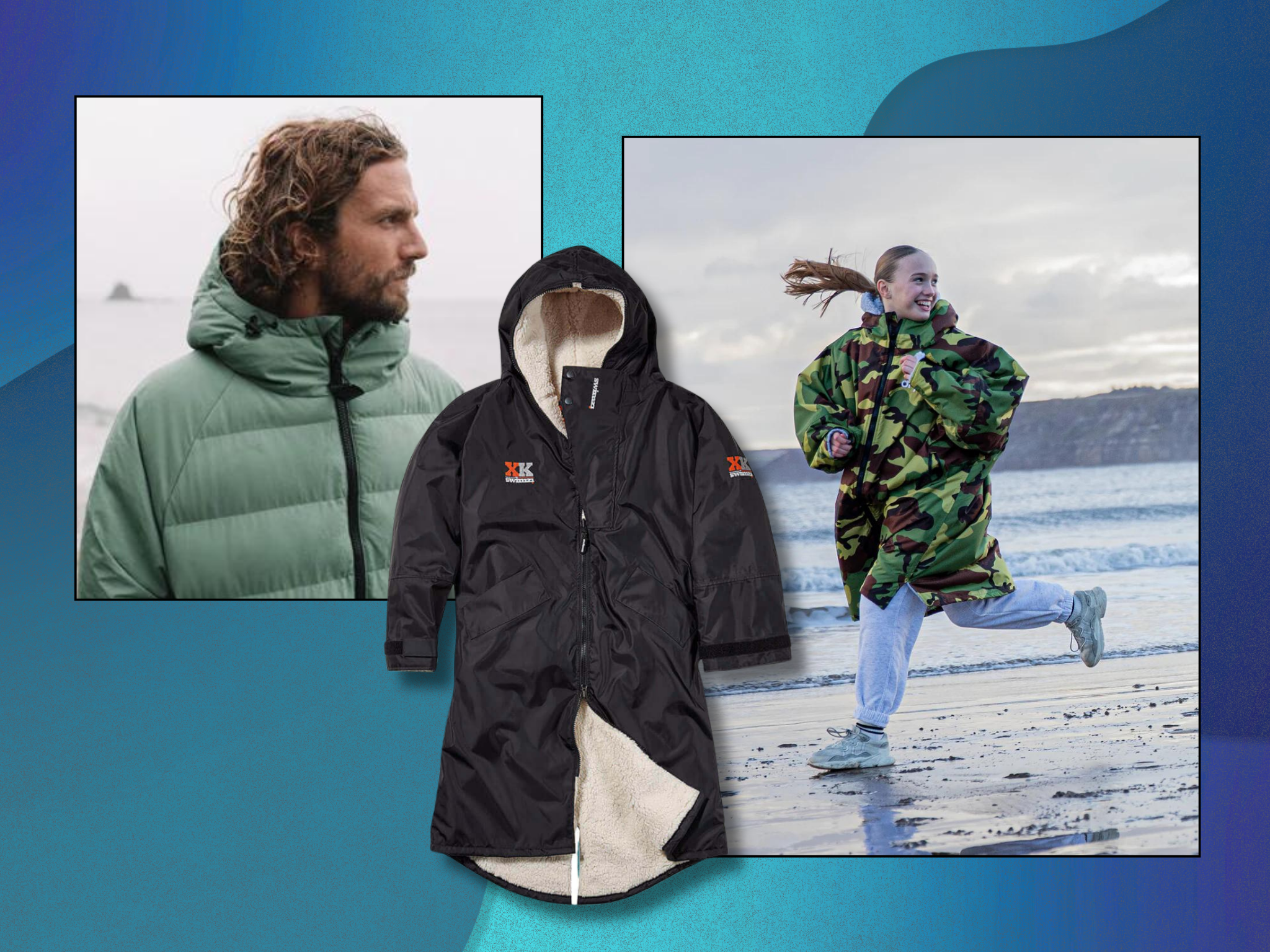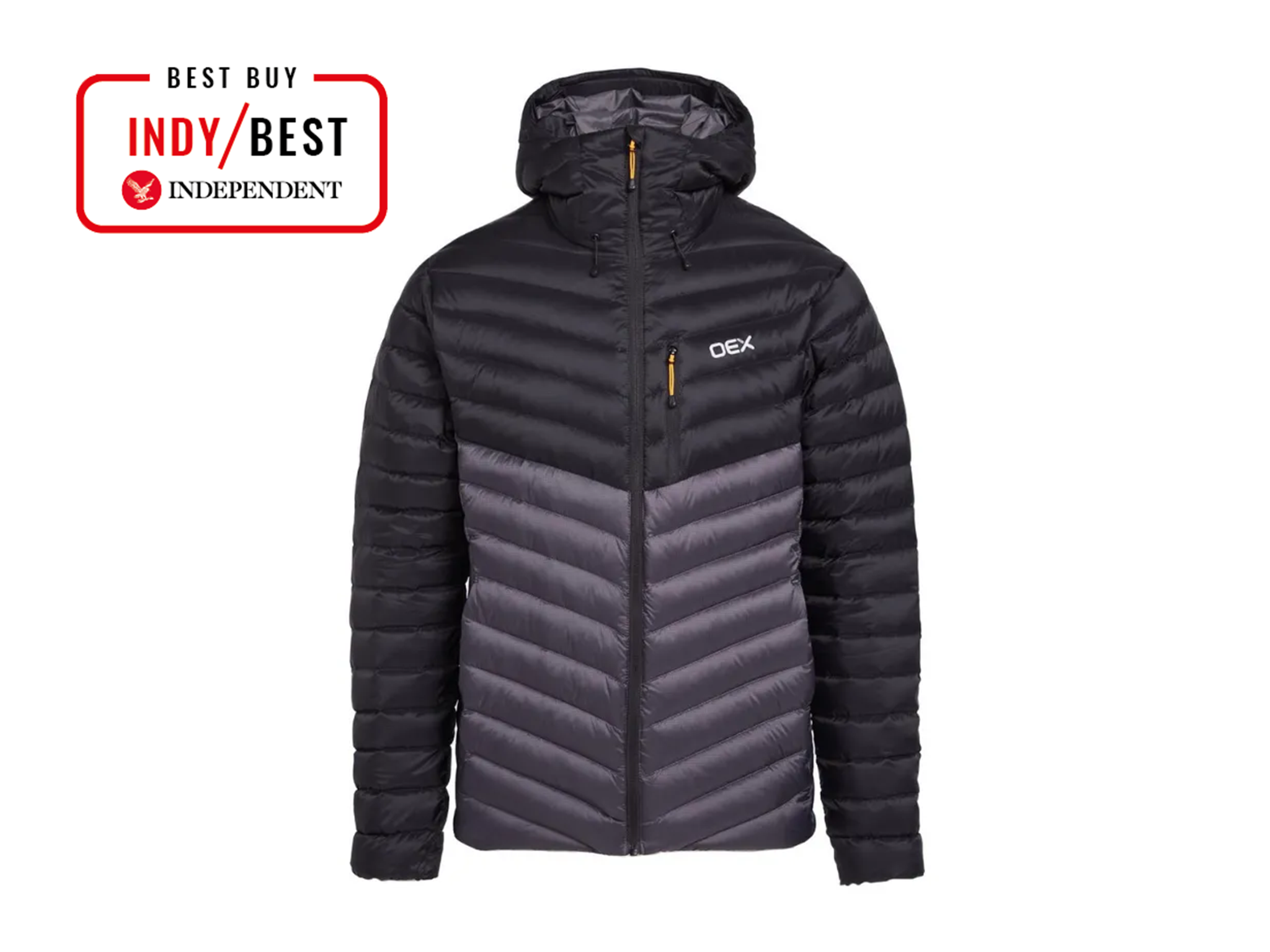
The Independent's journalism is supported by our readers. When you purchase through links on our site, we may earn commission. Why trust us?
13 best men’s puffer jackets that will help fend off the wintry weather
We donned the latest insulated layers and tested them on Dartmoor
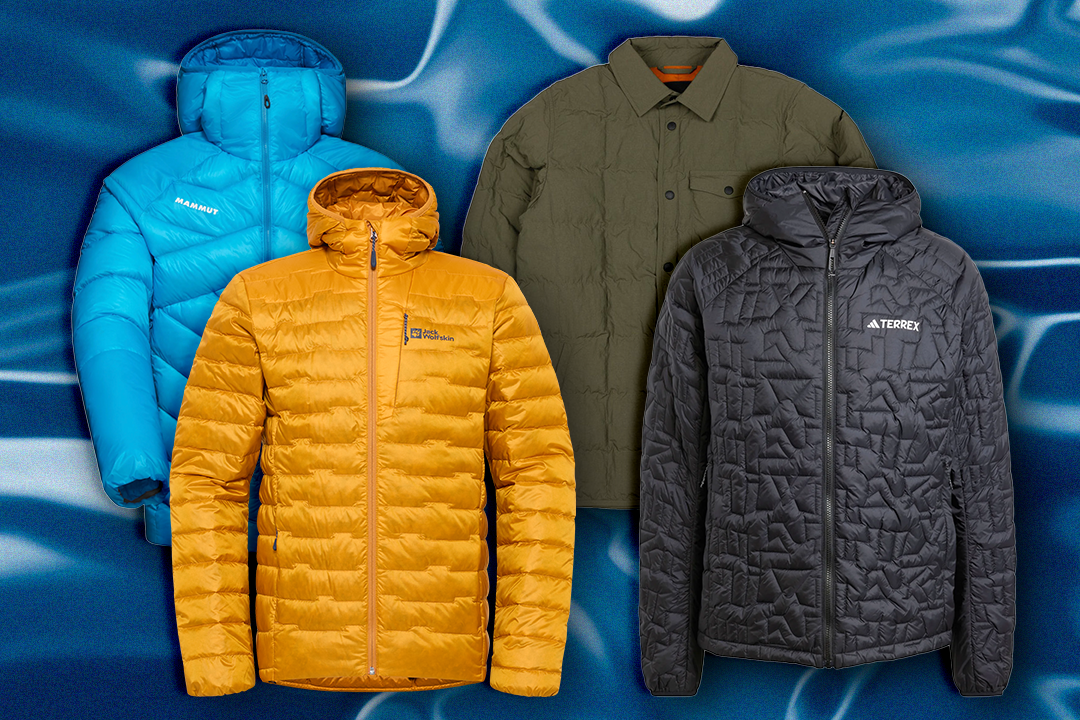
There comes a time (usually on the sideline of a U14s football or rugby match in winter) when you suddenly realise the jacket that you’re wearing just isn’t going to cut it any more.
However, biting winter winds are no match for a quality jacket filled with highly insulating down (duck, goose, or synthetic) compartmentalised throughout the jacket in “baffles”, which is what gives the outer layer of a puffer jacket its distinctive look.
This insulating effect is measured by its “fill power”, which refers to the down’s ability to create pockets of air that trap warmth within the jacket. The higher the fill power, the more air pockets in the down, and the cosier you’ll be kept on the coldest days.
In our search for the best men’s puffer jackets, we wanted the insulation in the jackets to move with us and not be restrictive in any way. We were also wary of the weight-to-warmth ratio of each garment, ensuring jackets were functional for everyday use rather than purely polar exploration.
Durability, in terms of the materials used, was also important – after all, winter puffers take a lot of punishment, whether that’s withstanding the rigours of a hiking trip or taking the dog for a countryside ramble to the pub. Read on to find out which shells are best suited for your plans.
How we tested
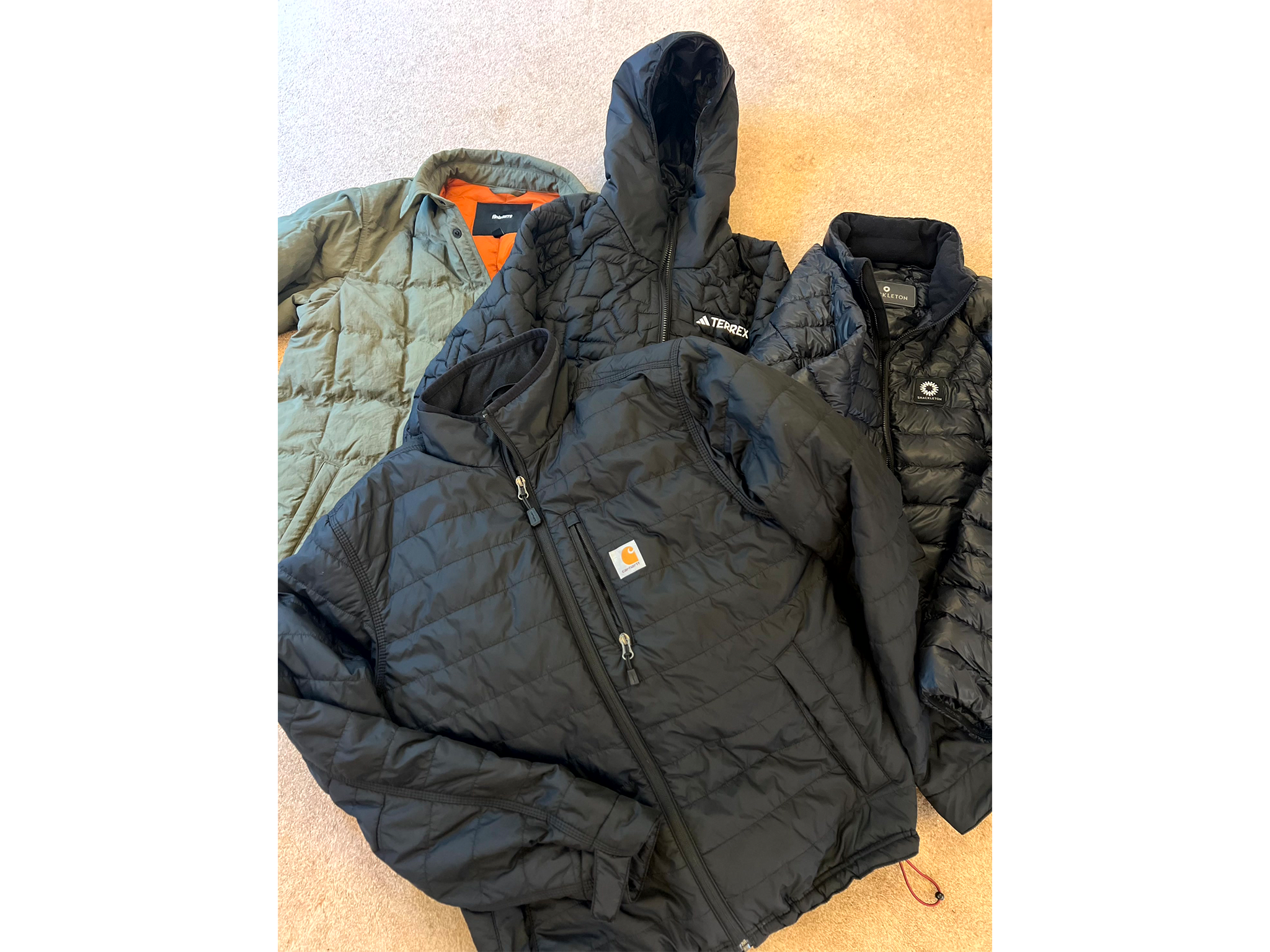
We had a good window for testing when the arctic winds blew into the UK and there was a prolonged period of dry and very cold weather. This gave us just the environment we needed to put our assessment criteria – such as warmth to weight ratio and fit – to the test with all the jackets worn during day walks on a bitterly cold and windy Dartmoor, where the high granite outcrops offered plenty of opportunity to test each jacket’s ability to withstand cold, wind, rain and general abrasion from the environment. As always, we also looked at the price of each product, to assess value for money.
Why you can trust us
Jon Axworrthy is an expert when it comes to outdoor apparel and has been testing various cold-weather must-haves for IndyBest since 2017, so he knows the fundamentals of what makes a great bit of kit. Where puffer jackets are concerned, he’s carefully assessed fabrics and durability and conducted thorough testing to make sure each one will serve you well.
The best men’s puffer jackets for 2025 are:
- Best overall – OEX kintra down jacket: £88, Gooutdoors.co.uk
- Best budget buy – Peter Storm loch down jacket: £40, Gooutdoors.co.uk
- Best for durability – Carhartt rain defender: £103.99, Carhartt.com
- Best for bitter conditions – Shackleton halley ultralight jacket: £295, Shackleton.com
OEX kintra down jacket

- Best: Overall
- Weight: 182g
- Down: Duck/synthetic mix
- Rating: 700-fill power
- Colourways: Black, black/grey, red, blue
- Why we love it
- 700-fill for this price? Yes, please
- Take note
- A few feathers lost over time
The vertical baffle construction of this design kept the duck down, with its impressive 700-fill power, where it needed to be, but it also meant the jacket offered plenty of warmth without the bulk, which, combined with its athletic fit, performed well on our Dartmoor yomp.
When we were working hard and had warmed up enough to take off the jacket, it was easily stashed, and the shell’s ripstop outer material meant we had no worries about handling it quite roughly in and out of our backpack.
The durable water-repellant (DWR) finish also ensured the down stayed in good condition and performed well – even after a high moor snow flurry made the jacket quite damp.
The hood and hem are adjustable, the cuffs elasticated, and, when zipped all the way up, the jacket offers a high collar and neckline to protect your face against wind chill.
Finally, the details are all there, too, with an easy-access chest pocket and two cosy lined pockets that also zip up.
Peter Storm loch down jacket
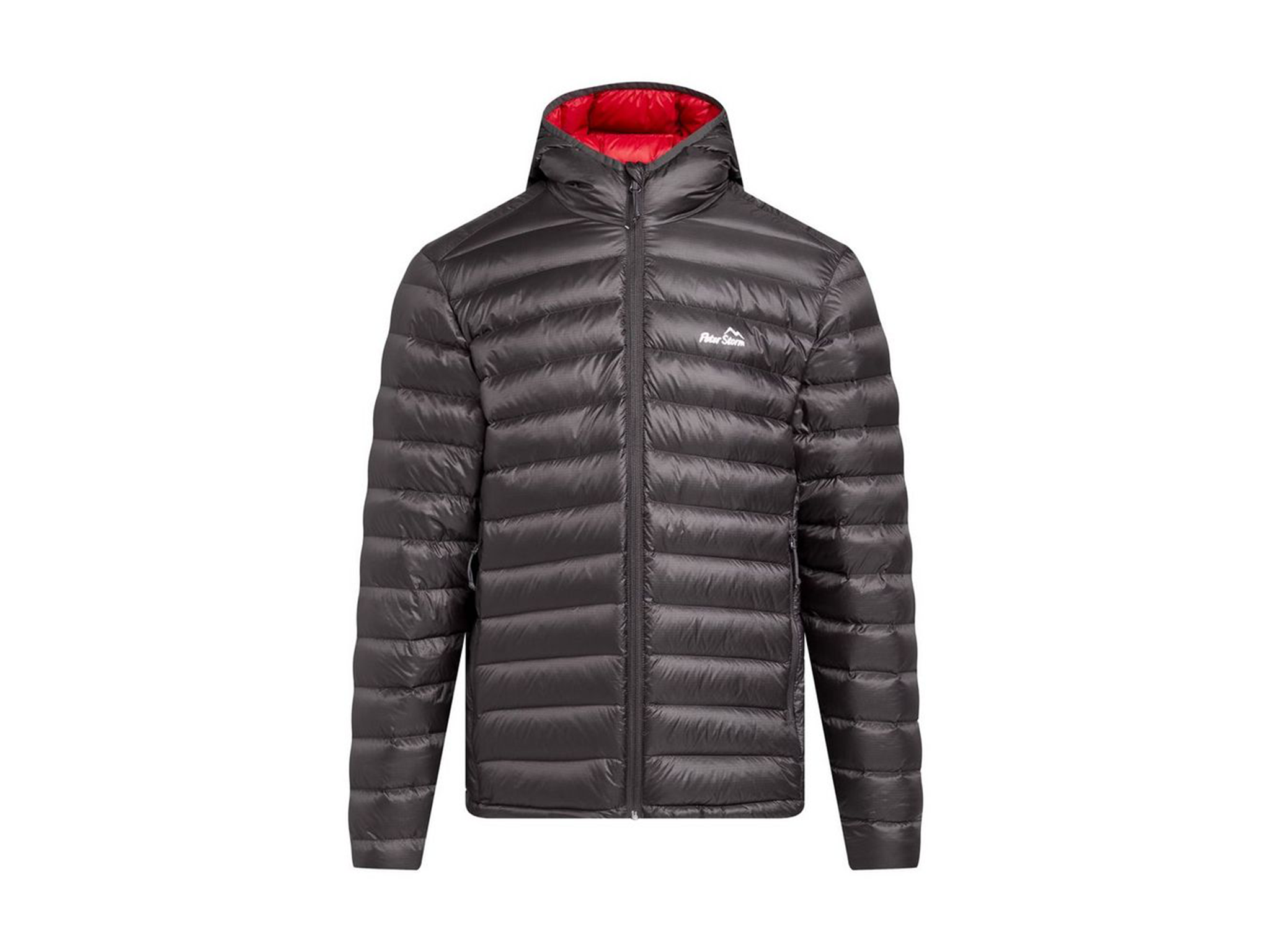
- Best: Budget buy
- Weight: 159.5g
- Down: Duck/synthetic mix
- Rating: 650-fill power
- Colourways: Blue, grey
- Why we love it
- Good size range
- Great value
- Take note
- Loose fit
This jacket makes for a good grab-and-go piece, with its synthetic 650-fill power down running in horizontal baffles and doing a good job of keeping things toasty around your core and back.
Good adjustability comes in the form of an elasticated hood and cuffs, while the draw hem means you can get a custom fit and lock in the heat when you want it. The outer is made from ripstop material and offers good protection for everyday use. There are zipped hand pockets, and the jacket packs down tightly into its own hand pocket, for extra convenience.
Carhartt rain defender
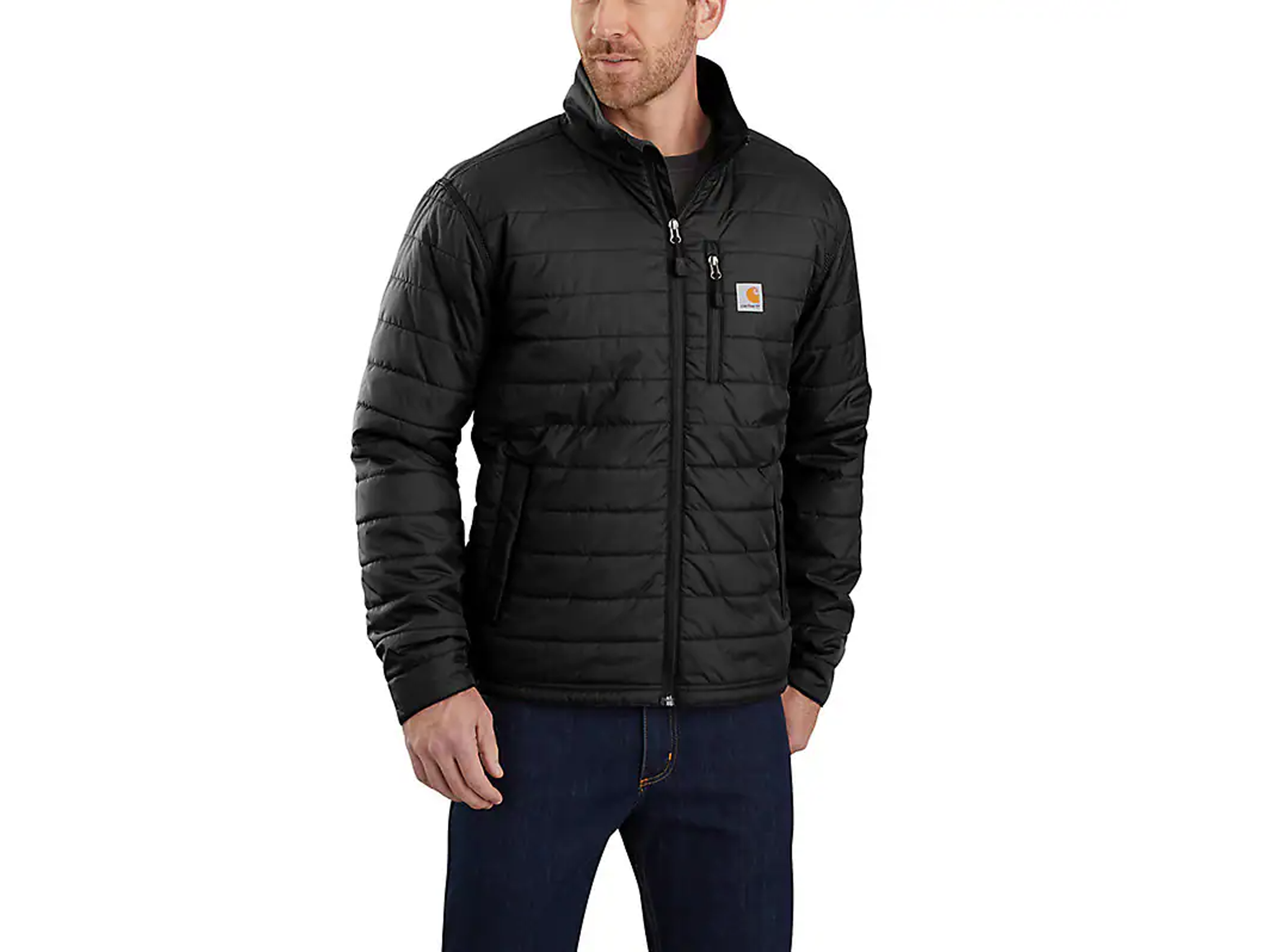
- Best: For durability
- Weight: Shell 1.75oz
- Down: Synthetic
- Rating: Unspecified
- Colourways: Black, brown, light brown, navy
- Why we love it
- Durable
- Take note
- Relaxed fit
Rain can cause the down in a jacket to become damp and therefore lose its efficiency but, as its name suggests, we found this jacket did an excellent job of maintaining warmth even when it got a significant soaking.
It’s lightweight with a horizontal baffle pattern, and the layers of synthetic insulation provide an excellent weight-to-warmth ratio, so, the design can work as a standalone jacket at home or as part of a layering system, if you’re venturing farther afield.
As with all Carhartt clothing, this is a true utility garment that’s well-stitched and able to withstand some heavy wear and tear. It features two external hand pockets, a smartphone-sized chest pocket, and two more interior pockets.
Jack Wolfskin passamani hoody jacket
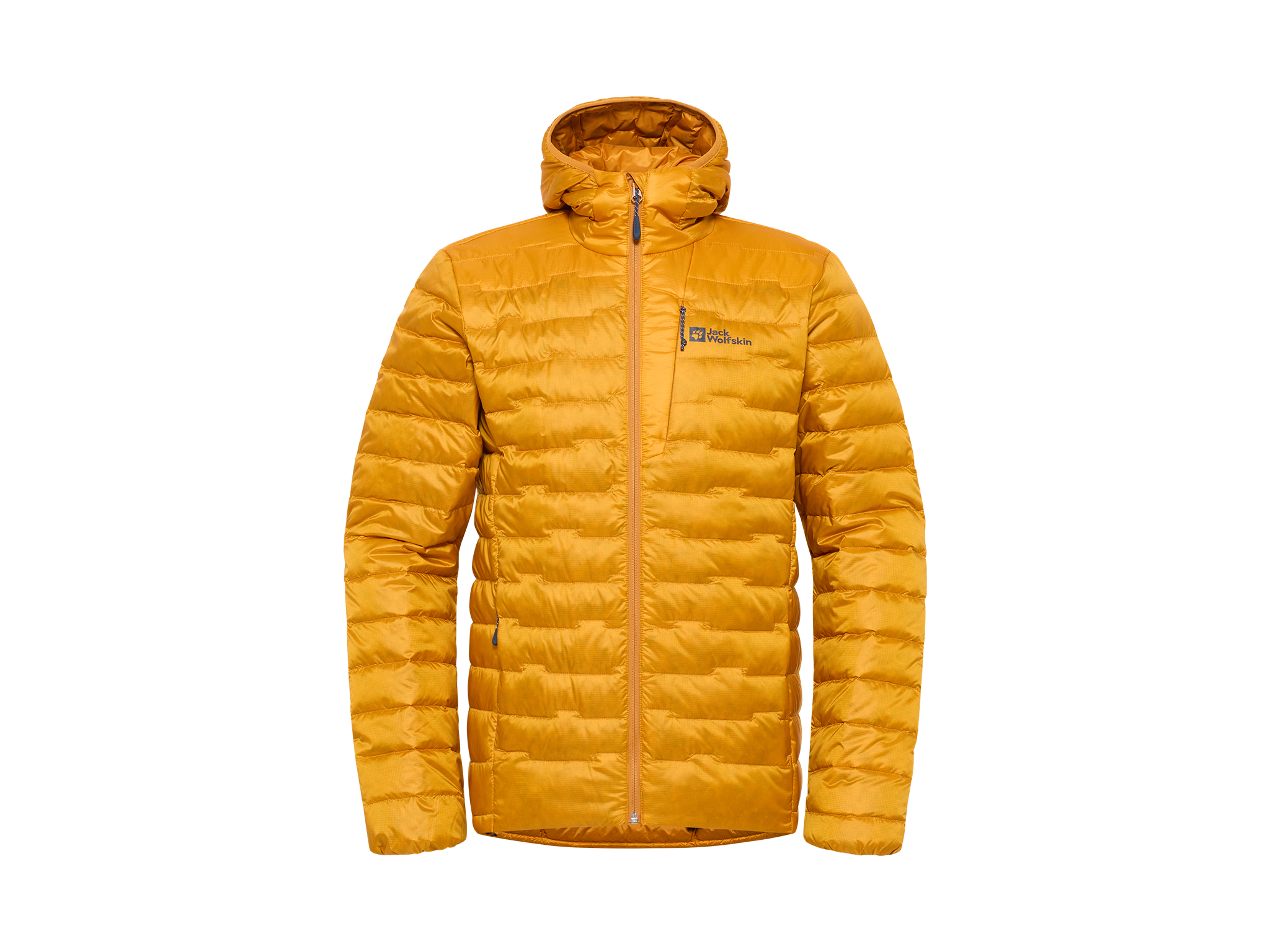
- Best: For dog walks
- Weight: 369g
- Down: Allied feather down
- Rating: 700-fill power
- Colourways: Yellow
- Why we love it
- Bold colour
- Take note
- Loose fit
With 700-fill down, this jacket was very welcome when temperatures tumbled, and the baffling did a good job of keeping the design close to the body, which meant the chill barely made an impact during an evening’s dog walk. The bright colour also meant we didn’t have to stride out looking like motorway maintenance in a high-vis vest.
The design’s “expedry” treatment means the jacket is still effective in mist or light rain, and the down wasn’t compromised in any way. The pertex quantum fabric, meanwhile, is windproof and water resistant.
The hem and hood are adjustable, and the elasticated cuffs make it easy to get on and off, while the overall warmth-to-weight ratio was excellent, and the jacket moved well with body motion.
There’s one chest pocket and two side pockets – all zipped to keep everything stowed safely, and the jacket can be packed away into a stash pocket, for convenience.
Adidas terrex xperior primaloft
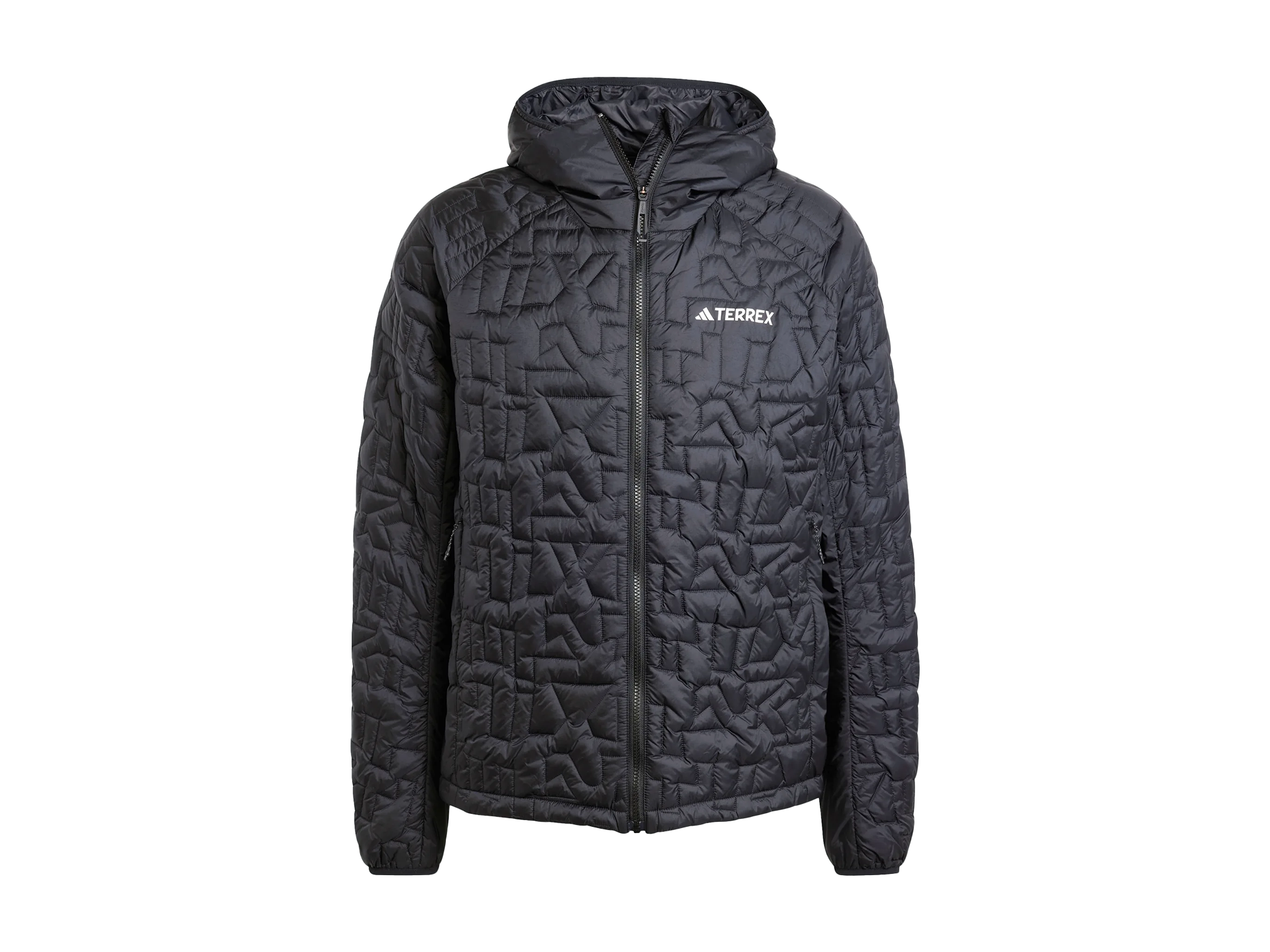
- Best: For winter hiking
- Weight: Unspecified
- Down: Primaloft
- Rating: Unspecified
- Colourways : Brown, navy, black, light grey
- Why we love it
- Looks great
- Total functionality
- Take note
- Snug fit
Baffling has been turned into a styling feature here, and it’s probably going to be a Marmite point for many – you’re either going to like the crazy-paving pattern or loathe it.
We loved the fact it makes the jacket stand out from the puffer crowd, and the Primaloft synthetic insulation, with its 650-fill power rating, means it’s more than a match for sub-zero days.
Lightweight, compressible, water-repellent and with a dropped hem at the back, this is a very adaptable winter hiking jacket, and we certainly appreciated the nice high collar when we turned headlong into the wind.
There’s excellent attention to detail throughout, too, such as the easy zip pockets, which have been designed to be fumble-free for those especially cold days when you’re wearing gloves.
Finisterre lapwing jacket
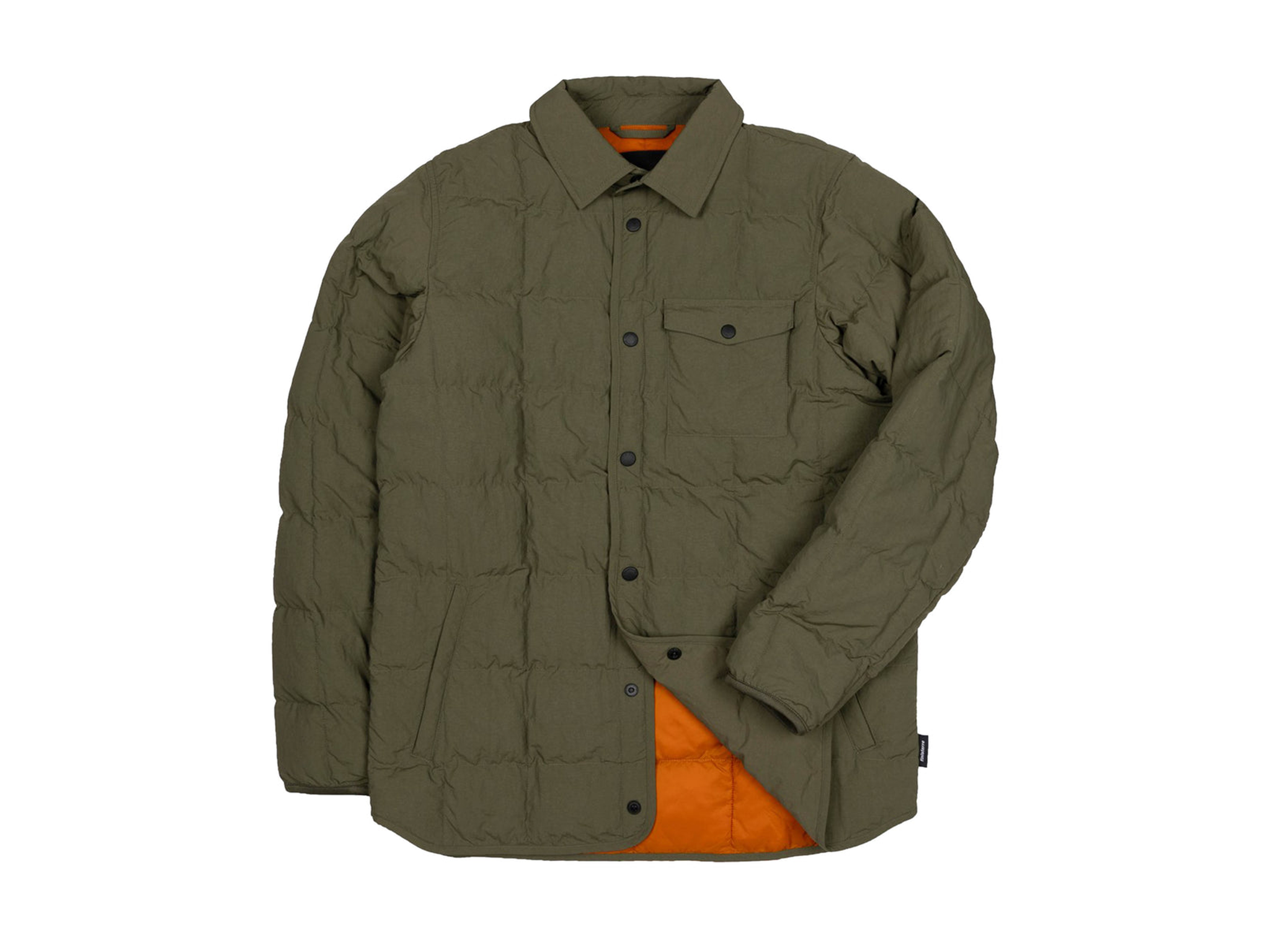
- Best: Transitional jacket
- Weight: 163g
- Down: Synthetic
- Rating: Unspecified
- Colourways: Navy, olive green, dark brown, light brown
- Why we love it
- Style and substance
- Take note
- Straight cut
- Fits large
This is the perfect piece for those late winter days when the sun is beginning to get some warmth back, but winter isn’t quite done with us yet.
The shacket styling means it is long in the body with a stepped hem, and the light, synthetic insulation, contained in square baffling, adds a good layer of protection against the cold when fully done up, using the quality snap fastenings.
As always with this home-grown brand, nothing feels like an afterthought – there’s DWR treatment to keep you dry, good packability, a handy chest pocket, as well as comfortable, well-positioned side seam pockets and four internal pockets. We also really liked the matte aesthetic and contrasting lining.
Shackleton halley ultralight jacket
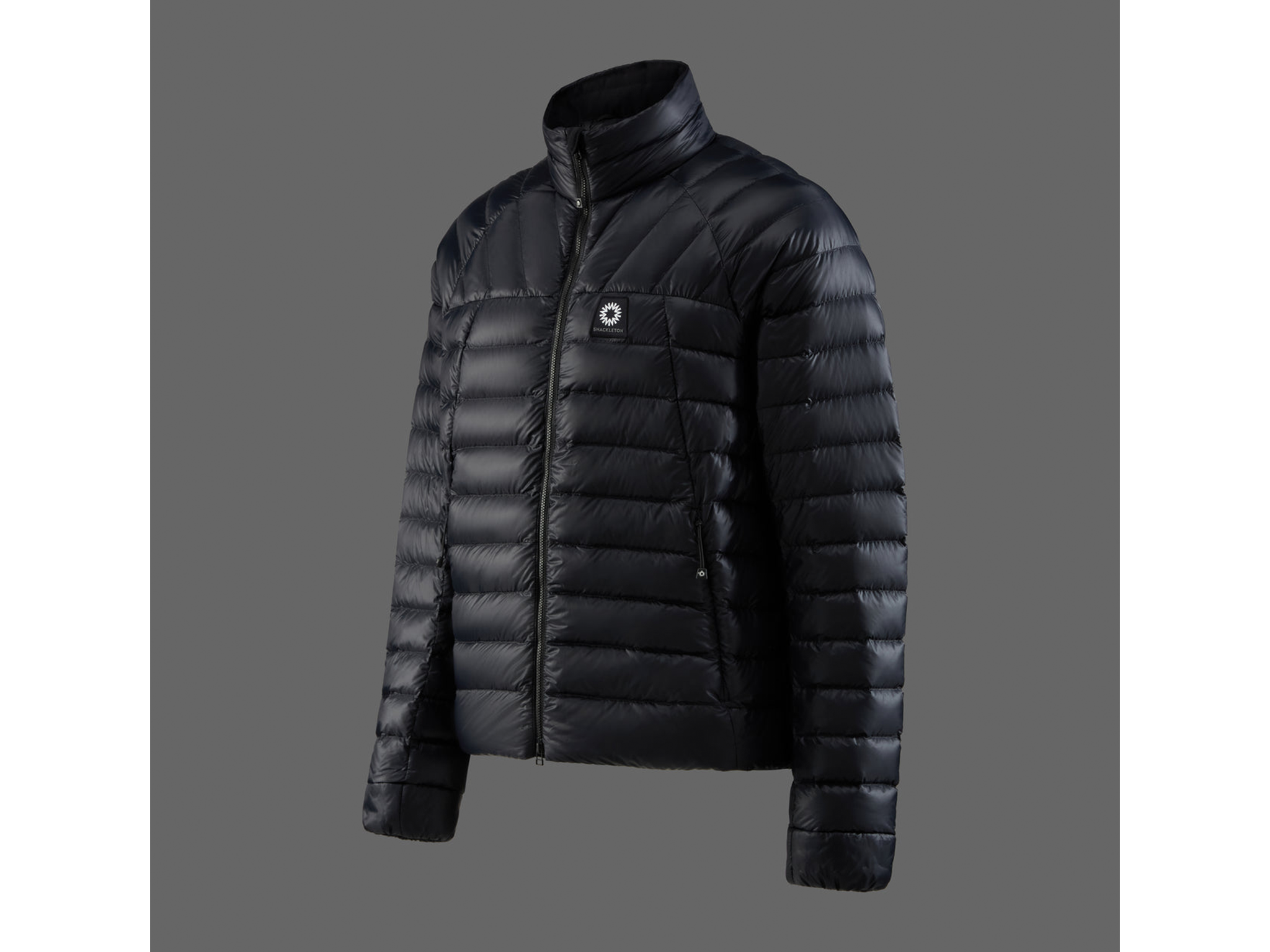
- Best: For bitter conditions
- Weight: Unspecified
- Down: Goose
- Rating: 800-fill power
- Colourways: Black, grey
- Why we love it
- Heat retention
From the microfleece chin guard to the engineered baffle construction with its 800-fill power goose down and ripstop shell, this is the jacket you need if you’re going to do some serious winter exploring in the UK.
The jacket has a tailored, snug fit but still allows for plenty of freedom when you move, and works well with a backpack. It’s wonderfully lightweight and packable (a stuff sack is attached inside the internal pocket), which makes it the ideal trekking companion. Light rain and snow are kept out with the jacket’s water-repellent finish, and the detailing is excellent, with hidden draft-dampening elasticated cuffs and easy-access side pockets.
Mammut taiss IN
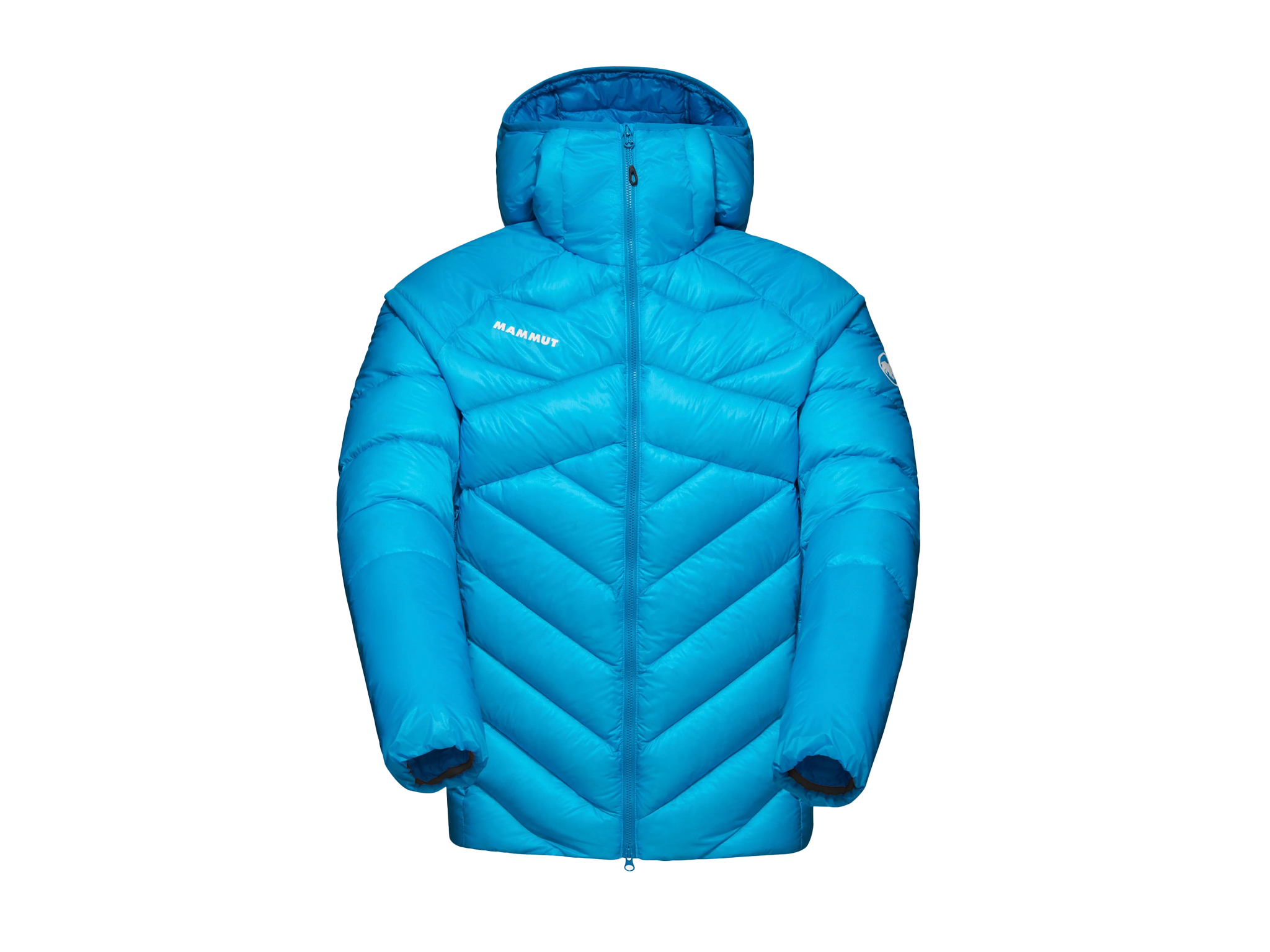
- Best: Fit
- Weight: 293g
- Down: Goose
- Rating: 900-fill power
- Colourways: Blue, yellow, black
- Why we love it
- Top quality
- Two-way zip
- Take note
- Not cheap
With one of the best warmth-to-weight ratios on test, the quality of this jacket can be felt as soon as you put it on, with a ripstop nylon outer that will withstand wear and tear.
The baffle pattern allows plenty of movement around the arms and across the back and shoulders, and Mammut has loaded the areas of the jacket that take the brunt of wet weather conditions (such as the shoulder, hood, forearm and sleeves) with synthetic down.
This retains its loft and keeps you warm, no matter what the weather and the elastic cuffs help keep everything wind- and water-tight.
There’s a two-way zip, which runs smoothly and never seems to snag, and the pre-shaped sleeves add to the anatomical tailoring that offers one of the best fits we experienced. As usual with Mammut, there’s a good choice of colourways, too.
We really couldn’t fault this jacket in any of our testing criteria and, although its price point is punchy, you will really get your money’s worth, whether hiking through a forest or powering up a peak.
Arc'teryx cerium hoody
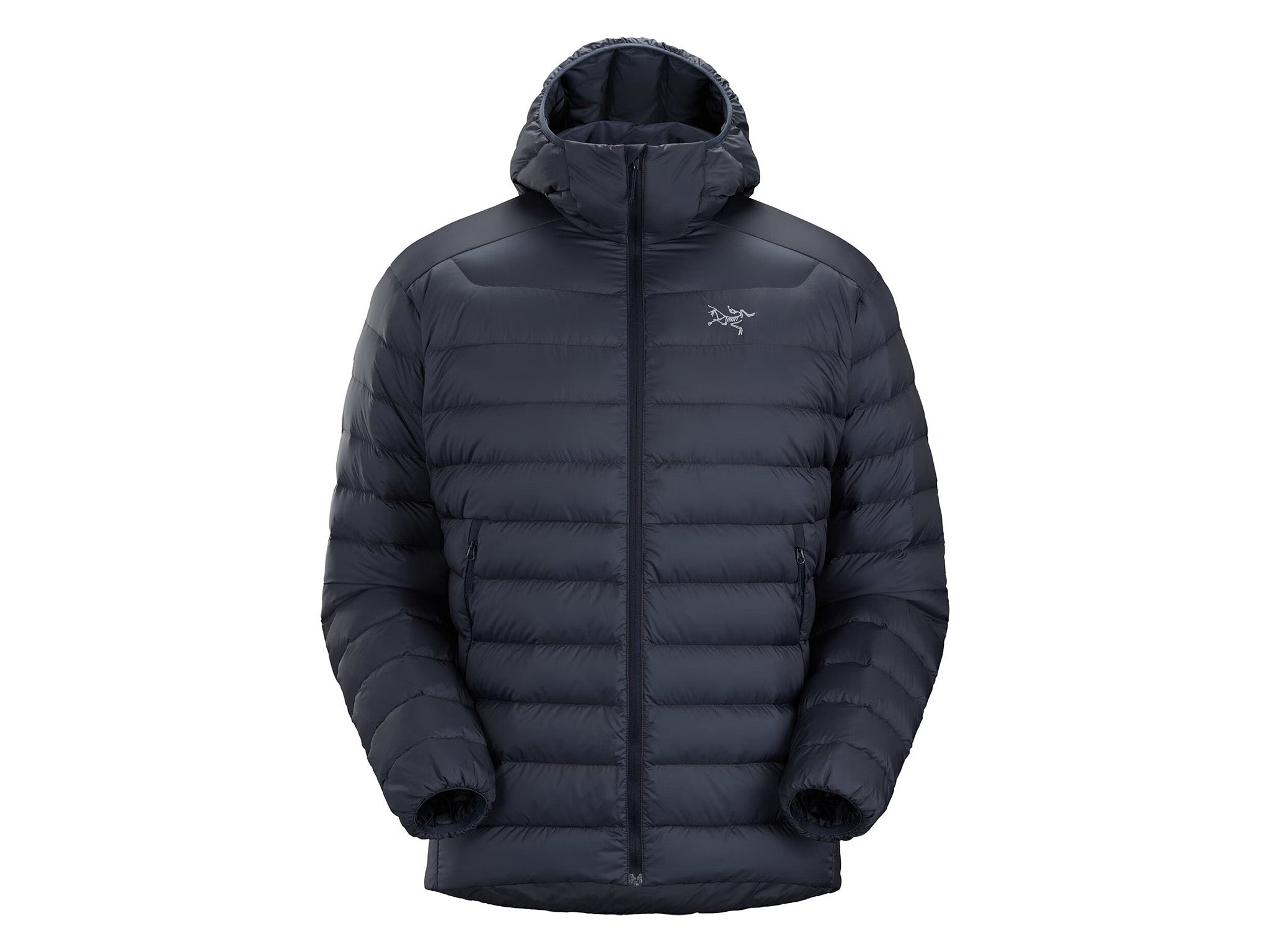
- Best: For warmth-to-weight ratio
- Weight: 340g
- Down: Goose
- Rating: 850-fill power
- Colourways: Black, black sapphire, sequoia/solaris, white
- Why we love it
- Lightweight
- Great for layering
The first thing you’ll notice with the cerium is it’s as light as a goose feather. Filled with 850-fill power down, it packs down easily, making it a superb choice for local adventuring and expeditions farther afield. The outer will withstand the rough stuff, or even an urban snag, but won’t withstand driving rain and instead has a low profile that should fit seamlessly with most people’s layering systems. Arc’teryx has utilised some synthetic down on the shoulders and the hood, to lessen the impact if you do get caught out.
The hoody offers up a really nice fit and allows for easy movement and, in terms of the details, this is a very well-thought-out jacket with nice, stretchy cuffs, an internal zip pocket and two roomy, warm hand pockets with zips.
Berghaus MTN arete hoody
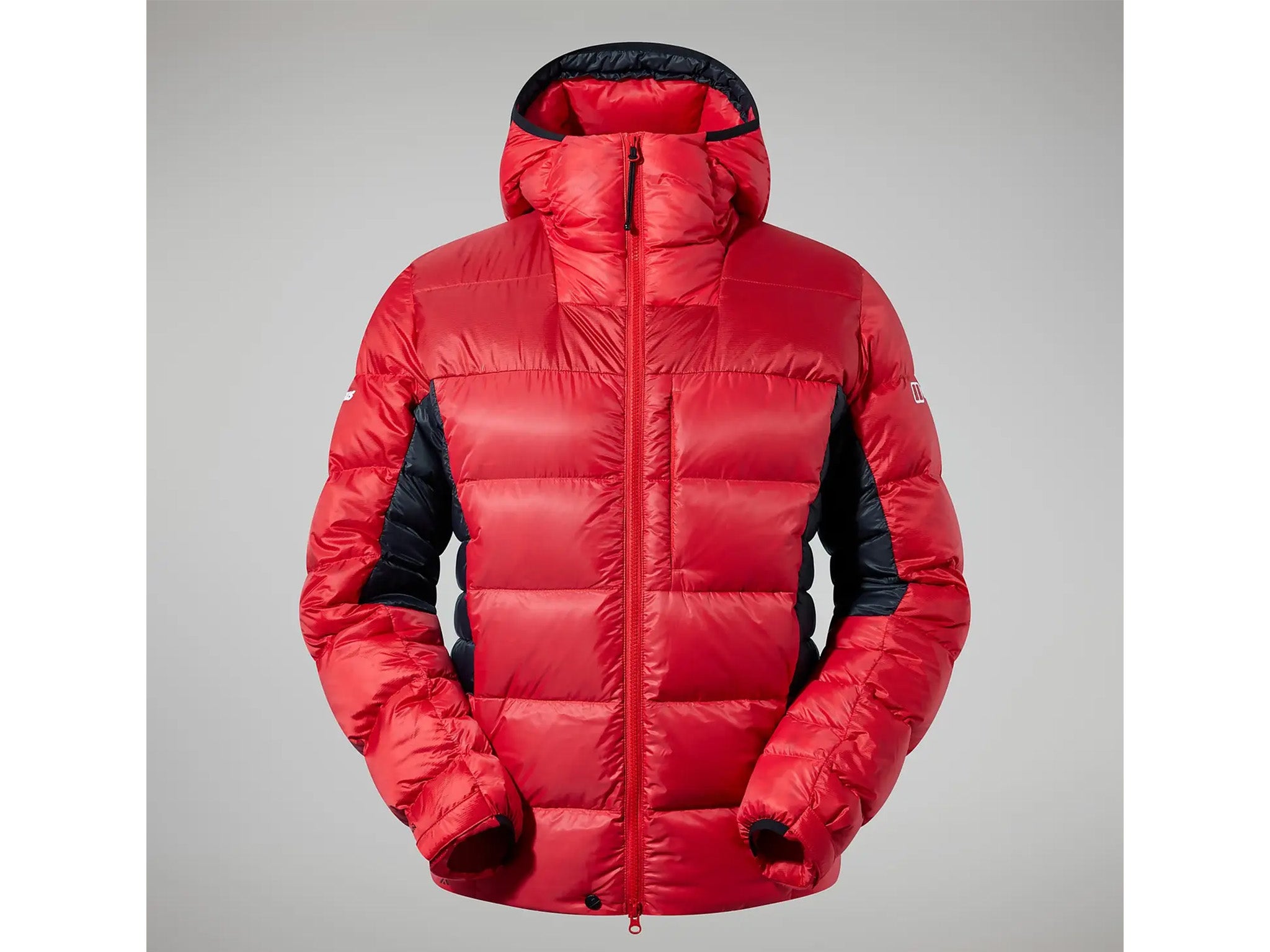
- Best: Dry, cold days
- Weight: 440g
- Down: Goose
- Rating: 850-fill power
- Colourways: Red
- Why we love it
- Warm
- Easy movement
- Lots of pockets
As the name suggests, this is a jacket that’s put together with the mountains in mind and is good for dry, cold days, offering plenty of protection against wind and low temperatures, while still managing to feel lightweight and manoeuvrable.
The 850-fill rating takes care of the warmth for sub-zero conditions, while the jacket employs the technique of body mapping, which uses different baffle constructions on different areas of the body to maximise warmth and keep you moving freely, even when wearing a backpack.
Berghaus has reinforced the areas of the jacket that are most likely to take a battering when travelling the trails, and we felt confident it could withstand close encounters with rocks, ice and vegetation, whether you’re mountain climbing or countryside rambling.
If you like your puffer to come with plenty of pockets, you won’t be disappointed here, as the MTN arete has five in total: two Napoleons and three internals.
ThruDark melee jacket
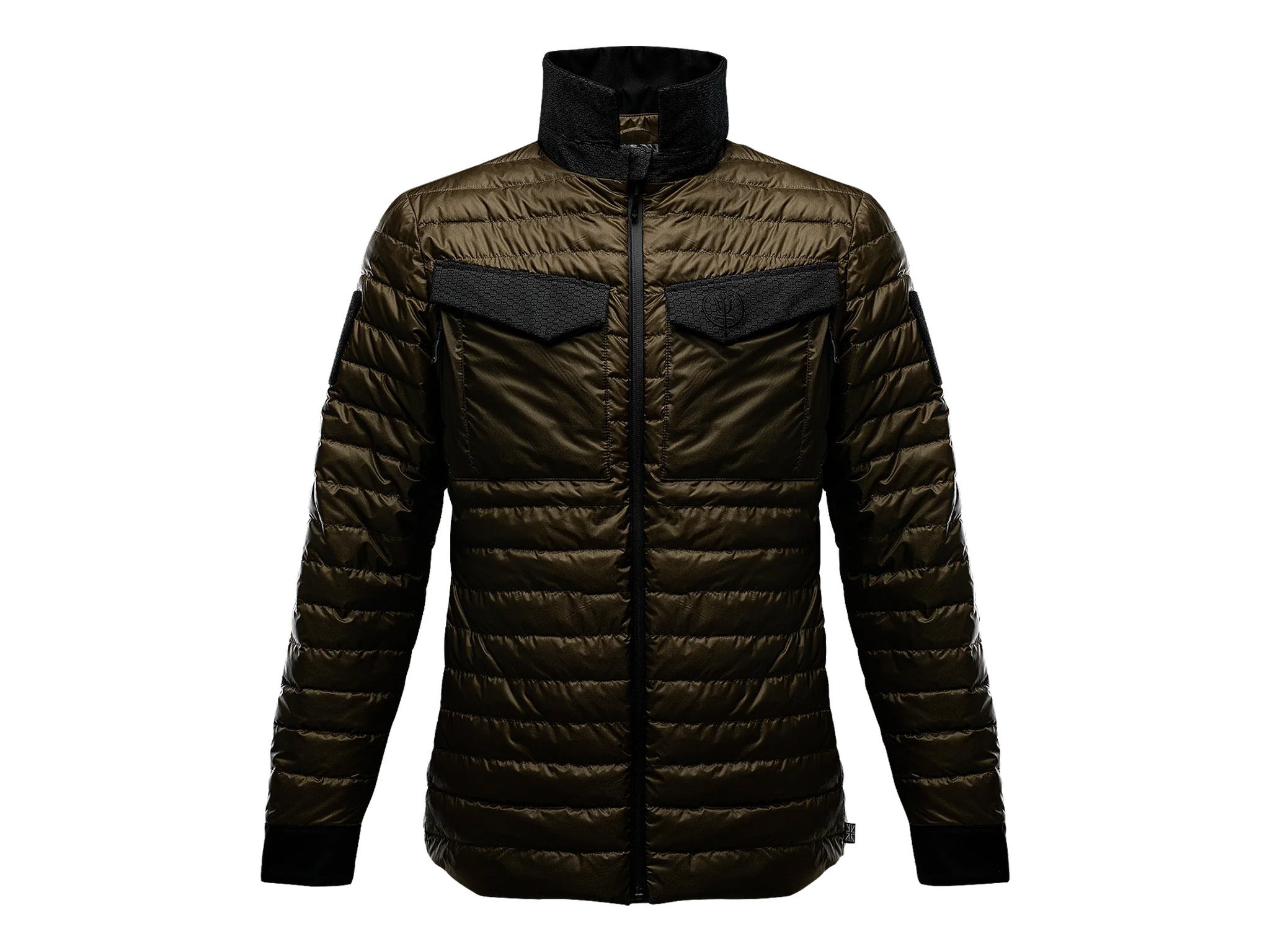
- Best: For country pursuits
- Weight: 800g
- Down: Goose
- Rating: 750-fill power
- Colourways: Black, olive
- Why we love it
- Keeps out the wind
- Feels robust
- Protective collar
- Lots of pockets
- Take note
- Not cheap
This UK brand keeps delivering innovative jackets that marry quality construction, good detailing and eye-catching design, and the melee is no exception. The outer gives plenty of protection against wind yet remains breathable, and the DWR-treated ripstop fabric is certainly built to last and will stop you from getting damp during a downpour.
The baffling works well with the quality down to provide plenty of insulation, and the whole jacket feels incredibly well-made and hard-wearing. The adjustable cuffs and collar are made from a composite blend of fabrics that are tough, without compromising the jacket’s overall comfort, and the collar can be turned right up, for extra elemental protection.
In terms of the pockets, there are two hidden chest zip pockets, two lower body zip pockets, as well as two chest pockets that close magnetically. Internally, there’s another zipped security pocket and there are even Velcro-compatible patches on either arm carrying the ThruDark branding, just in case you want to personalise the jacket some more.
Montane anti-freeze XT jacket
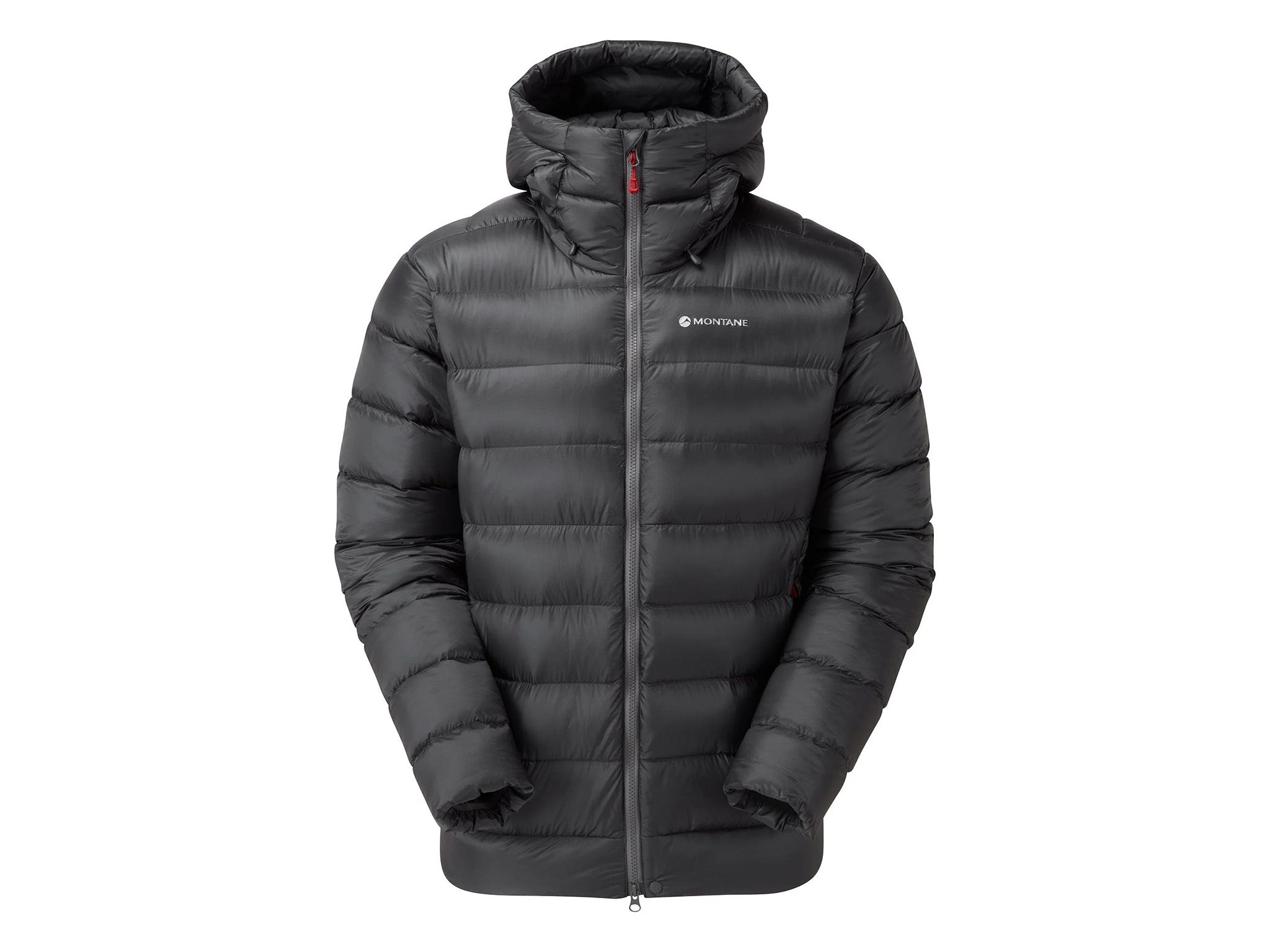
- Best: For the evening camp
- Weight: 460g
- Down: Duck
- Rating: 750-fill power
- Colourways: Caper, garnet, black, stone blue, eclipse blue, oak green, Neptune blue, citrus, orange
- Why we love it
- Low profile is good for layering
- Recycled elements
- Water repellent
The XT has a very impressive warmth-to-weight ratio and a fit that’s roomy enough to layer up underneath without restricting movement, but not so much that the jacket feels flabby when walking or keeps getting in the way of a backpack.
Even when fully layered up, there was a low-profile feel to the jacket, which did a great job of trapping the warm air created by the duck down, so insulation was never a problem, even on colder days and evenings.
The recycled, ripstop outer was clearly capable of withstanding more than just the elements, and it gave us plenty of confidence that the jacket wasn’t going to get shredded when we were moving through claustrophobic terrain.
As you’re unlikely to be wearing anything over this one, the water-repellent treatment stood up to the elements well – and that goes for the down itself, which is hydrophobic, so it won’t collapse when wet and lose all its insulating properties.
There are two zipped hand pockets, an internal zipper, elasticated cuffs and a drawstring hem and, for a big coat, it’s easily compressed.
The verdict: Men’s puffer jackets
The OEX kintra down jacket offers a superb combination of quality insulation in a fully functioning jacket for a range of winter pursuits. It allows you to move easily, without losing any heat, and you can wear it over a T-shirt and still be nice and snug, or layer it for winter hiking and trekking.
Meanwhile, the Mammut taiss IN has really got your back with its mix of technical know-how and wearability. The styling means it won’t look out of place in urban environments either.
It’s also worth mentioning the ThruDark melee, which we think pulls off a very neat trick of looking great without sacrificing any functionality in the key areas of insulation, weight and durability.
Put your best foot forward with our pick of the best walking boots for men for a blister-free hike
Voucher Codes








